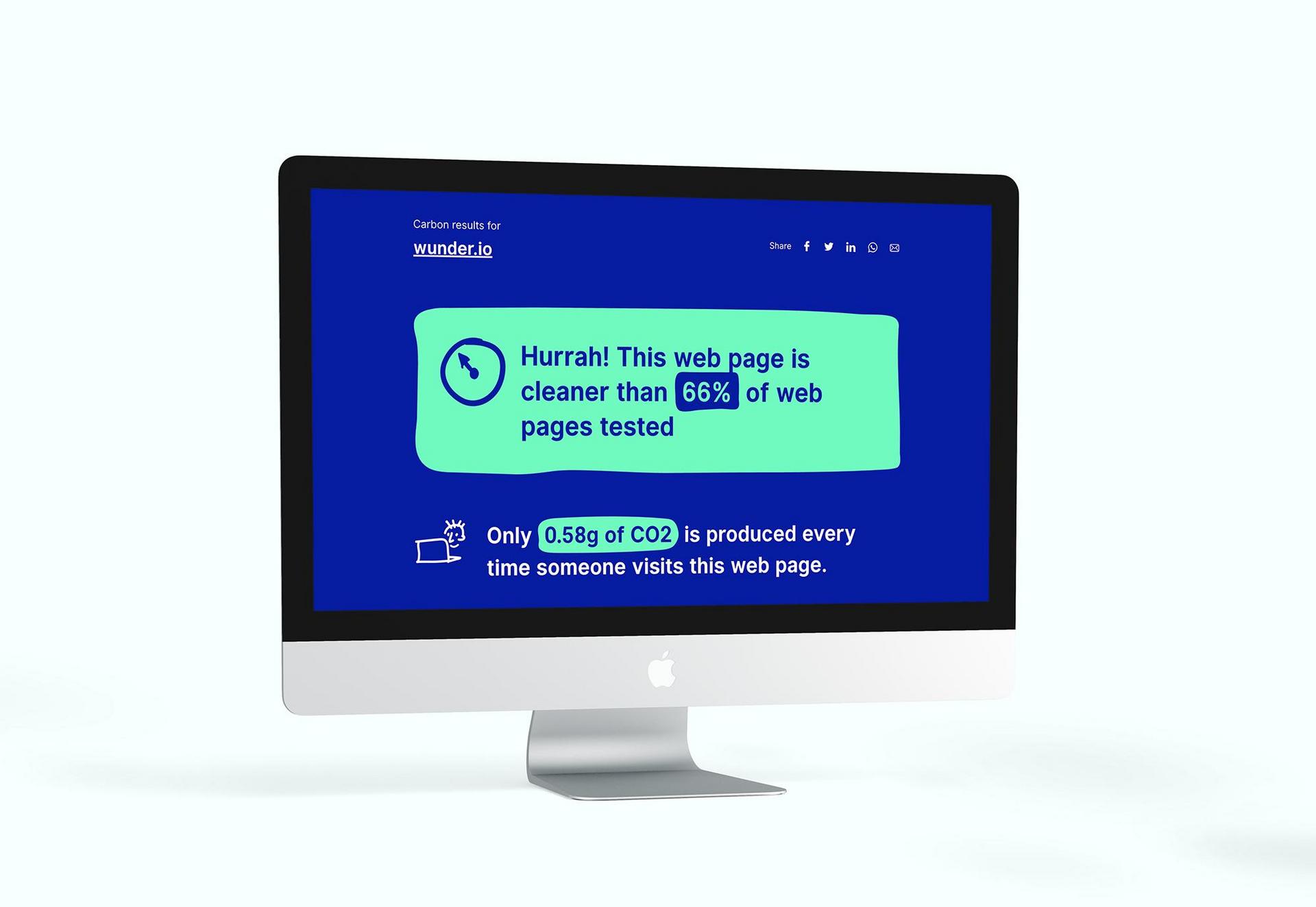Up to 90% greener digital? - this is how you do it!

Imagine the digital service to be a car that takes you from one place to another. The options on the market range from electric vehicles running on wind power to gas-guzzling muscle cars. How are you supposed to know what is the driving power or energy consumption of a digital service or what are its emissions?
The positive effects digitalization has on the environment are now discussed more than ever. After reading this article, you will know to ask whether your digital service runs on loads of diesel or a decent amount of renewable energy.
For a single person to use a digital service is nearly always more ecological than physically visiting a store. Besides, digital services are available 24/7 and for a way wider audience than before. New digital services emerge nonstop. Even though the digitalization of traditional services reduces the overall burden on the environment, the decision to develop new services or increase traffic comes with environmental responsibility.
Average Joe’s annual use of digital equals to intercontinental flight
Information and network industries are not the first ones to come to mind when you think of industries guilty of polluting. Still, in 2017, the internet's CO2 footprint was already equal to that of all global air travel. With the rapid growth in the number of digital services, the internet's CO2 footprint has nearly doubled from 2017opens-in-a-new-tab. In the next ten years, the internet’s share of carbon emissions generated by different industries can rise to one-fifth of the world’s total emissions.
At the same time, the number of internet users is estimated to rise by a billion. Even though an average internet user produces an intercontinental flight’s worth of emissionsopens-in-a-new-tab, the user has limited chances to reduce those emissions.
Digital service providers have a much better chance of affecting the impact their services have on the environment. A website with 10,000 monthly page views burdens the environment as much as the intercontinental flight mentioned above. The environmental burden of popular online services can be a million times higher, thus significant in the big picture.

When purchasing a service, it is possible to take a stance on its environmental impact and demand that the software company producing the service takes it into consideration. It’s highly likely that the consumers will soon wake up to the adverse effects digital services have on the environment. That is when responsible players will stand out favorably.
It is the responsibility of service providers to promote sustainable solutions. Since they design and build hundreds of web services, even a slight consideration of the environmental effects can result in a substantial total impact. In some cases, the right measures can reduce a service's carbon footprint by up to 90 percent. Yes, you read correctly; ninety percent.
What does digital services’ CO2 footprint consist of?
The emissions of a digital service mainly come from three things:
- Server capacity
- Data transfer
- End-user devices and architecture
Server capacity
A software company can directly influence their environmental impact by choosing an eco-friendly hosting provider and optimizing the code that is run.
Scaling the capacity automatically is an effective way to make sure no capacity goes wasted. The best way to do this is to make use of different cloud services, like serverless technologies and automatically scaling, which means only using capacity when genuinely needed. Wunder's Silta is an example of a cloud-based service that scales extremely well. You can read more about Silta here.
Data transfer and digital devices
One of the most significant ways to reduce a service's environmental footprint is to decrease the amount of transferred data. The environmental impact can be significantly lessened by making sure that only the data that needs to be transferred, will be transferred.
When the amount of data transferred and the code to be run on a device are optimized, a service will run smoothly even on older hardware, and the devices can be used longer. It should also be considered whether digital services should require the latest and greatest devices in order to work reliably. If services function smoothly on older devices, there is less pressure to manufacture new ones.
Green architecture
Technical solutions alone do not promote a service's eco-friendliness. For example, in the visual design of a service, thought can be given to how pictures and videos are used. They usually have a considerable effect on the amount of data transferred. Substantial savings can be achieved in data transfer when fewer and smaller images are used.
The usability and the information architecture of a service should not be trivialized. The clearer a website is, the easier it is for a user to find what they need. This way, the number of unnecessary page views decreases. The same goes for search engine optimization: The faster a user finds what they are looking for, the less they have to browse around the internet.
In short, here are the things that impact the eco-friendliness of your digital service:
- Server capacity: an environment-friendly server, optimized code, the optimization of the capacity’s usage-level
- Data transfer: eliminating unnecessary moving of data, optimizing the format for the data to be transferred.
- Digital devices: writing code that runs smoothly also on older devices, and does not burden them needlessly
- Content and UX: favoring lighter elements and optimizing the site in a way that ensures the user doesn’t have to browse unnecessarily
Sounds good doesn't it?
We are more than happy to help you to make your digital services greener, so let’s take the next step towards a more sustainable future. Contact our expert or fill in the form below and let us contact you.
